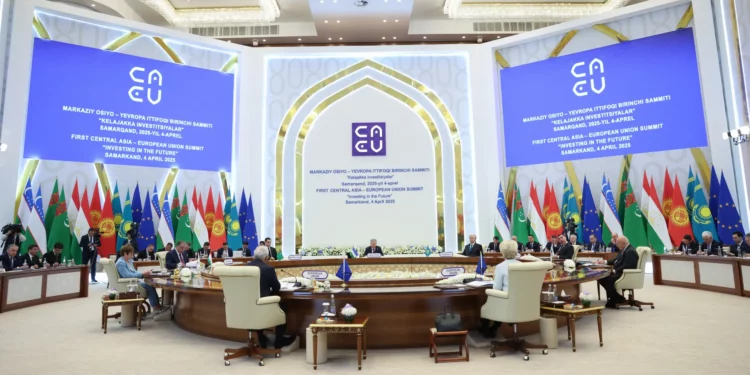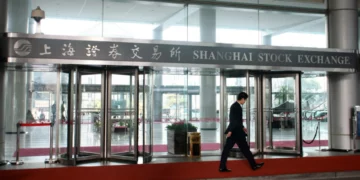Ursula von der Leyen explained that Central Asia’s abundant natural resources and industrial potential are attuned to the EU’s sustainability goals.
Central Asia is blessed with vast resources, and Western Europe has been striving to exert its influence in the region to help develop its neighbours as well as further its own economic agenda. European Commission President Ursula von der Leyen has confirmed that the European Union (EU) has invested a whopping $13.2 billion in Central Asia as part of its Global Gateway investment program.
In a press statement following the Central Asia-EU Summit held in Samarkand, Uzbekistan, on April 4, Leyen said that Central Asia is home to a significant share of global reserves, and Europe wants to make a fair and special offer. She explained that, as partners, Europe aims to build local value chains for critical minerals which means that the value created in Central Asia would remain in the region and facilitate job creation.
Explaining that helping the continent’s neighbours grow would only further Europe’s own growth, Leyen added that Central Asia’s abundant natural resources and industrial potential are attuned to the EU’s sustainability goals. She said that Europe does not only want to generate more value for the resources but also help generate employment in the region while upholding environmental and social standards.
This billion-dollar package has four objectives. The first priority is to bring the two regions closer, with the EU investing $11 billion in the Trans-Caspian International Transport Route, which is the EU’s flagship project. Following this, the focus will be on climate, energy and water. The EU has promised to build dams in Central Asia to enhance energy and water security. There is also a plan to cultivate a new green belt in the Aral Sea basin in the desert area.
Improving digital connectivity is the third priority, with EU partners working towards bringing internet access to remote areas in the region, particularly to schools, and hospitals via satellites. Finally, the fourth priority is raw materials which are required for clean energy and clean economy. The EU has signed an MOU with Uzbekistan and Kazakhstan on critical minerals and has also endorsed a Joint Declaration of Intent on Critical Raw Materials.
This was the first summit held between the EU and the five Central Asian countries- namely, Kazakhstan, Uzbekistan, Turkmenistan, Kyrgyzstan and Tajikistan. European Council President António Costa was also in attendance at this summit, where he announced the EU’s eagerness to build a mutually beneficial partnership with Central Asia.
The primary goal of the Samarkand Summit was to adopt a new strategic approach to improve trade relations and other ties between the two regions. Leyen said that the summit would strengthen trade and open more opportunities for cooperation in areas of transport, critical raw materials, digital connectivity, water and energy.
Political observers have described the Global Gateway project as one which could be a genuine contender to China’s Belt and Road Initiative (BRI). The EU has assured the five countries of its commitment to upholding sovereign values and its intention to address common security challenges.
The summit’s agenda was tailored towards focusing on multilateralism, security threats, economic challenges and investment prospects. This Global Gateway initiative also centred around climate neutrality, energy security and green transition. Central Asian state heads were also able to hold bilateral discussions on trade, border security and infrastructure development.
The recent Trump tariffs have also made the EU an attractive trading partner for Central Asia. The US President has slapped a 10% tariff on imports from Uzbekistan, Turkmenistan, Tajikistan, and Kyrgyzstan, while Kazakhstan has been subjected to a much higher figure of 27%. The tariffs will certainly upend regional trade, with countries looking for more beneficial alternatives.
The EU is Central Asia’s second-largest trading partner and the largest source of foreign investment, accounting for roughly 40% of inflows. Given the recessionary phase the global economy is entering, this big-budget investment will prove to be profitable for both, the EU and Central Asia.

















